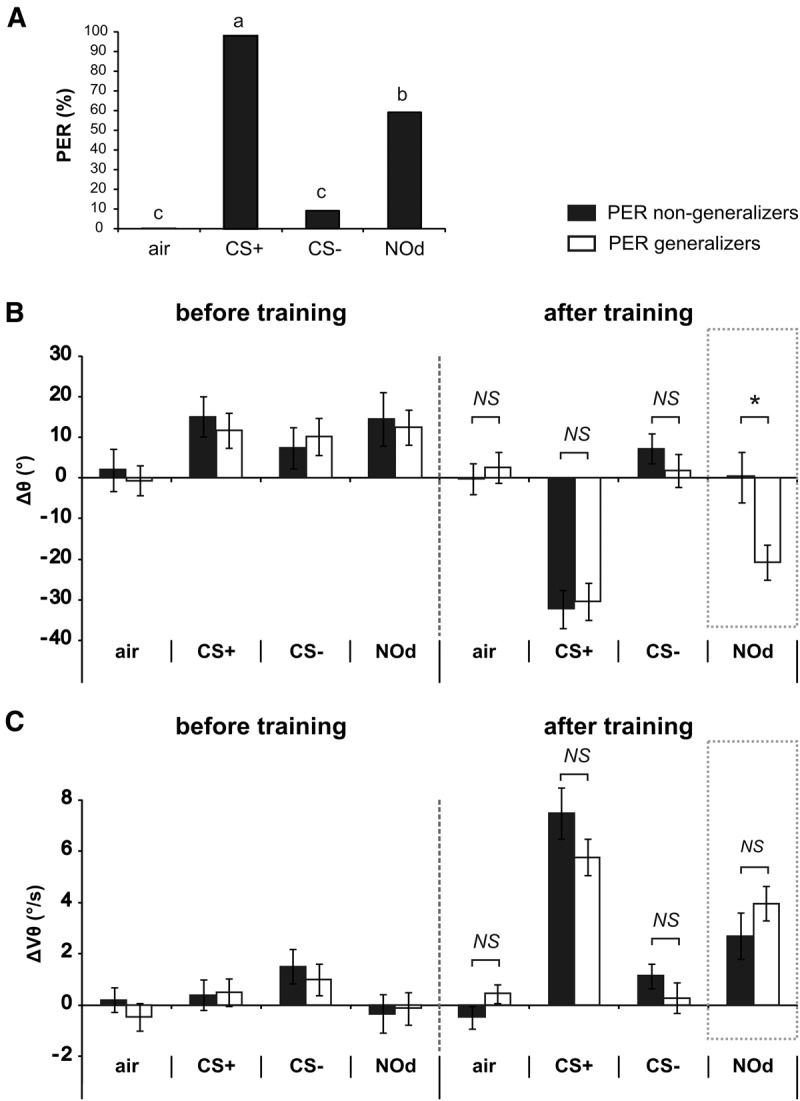Figure 6.

Antennal movement variation as a function of PER generalization to the novel odorant after appetitive conditioning. (A) Proportion of PER recorded to the air control, the CS+, the CS−, and the novel odorant (NOd) in the recording session following training. According to learner bees’ responses to the NOd, two subgroups were made: generalizers and nongeneralizers. (B,C) Histogram showing the change in B angular position (Δθ), and C angular velocity (ΔVθ) during odor presentation (during–before odor) for the air control, the CS+, the CS−, and the novel odorant (NOd) in individuals that extended their proboscis in response to NOd (generalizers, white, N = 23) and the ones that did not (nongeneralizers, black, N = 16). A difference in the angular position response appeared between subgroups only for the NOd (t-test, P < 0.05), not for the CS+, the CS− or the air control. No difference appeared between subgroups for the angular velocity.
